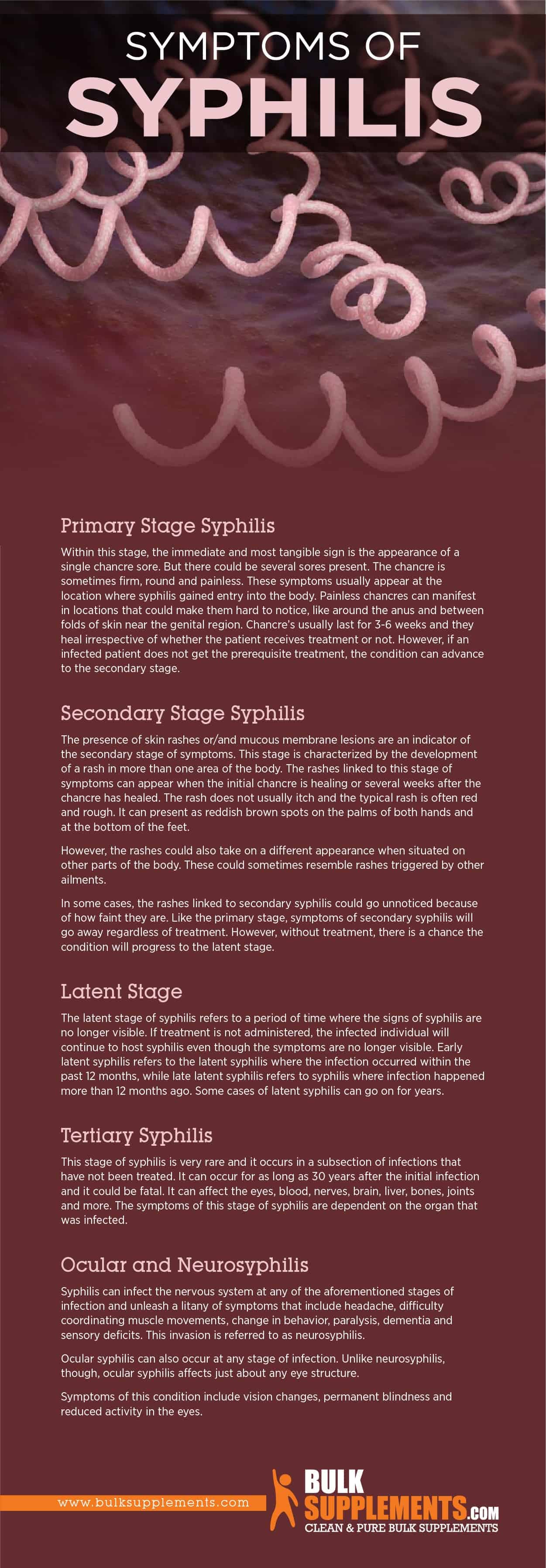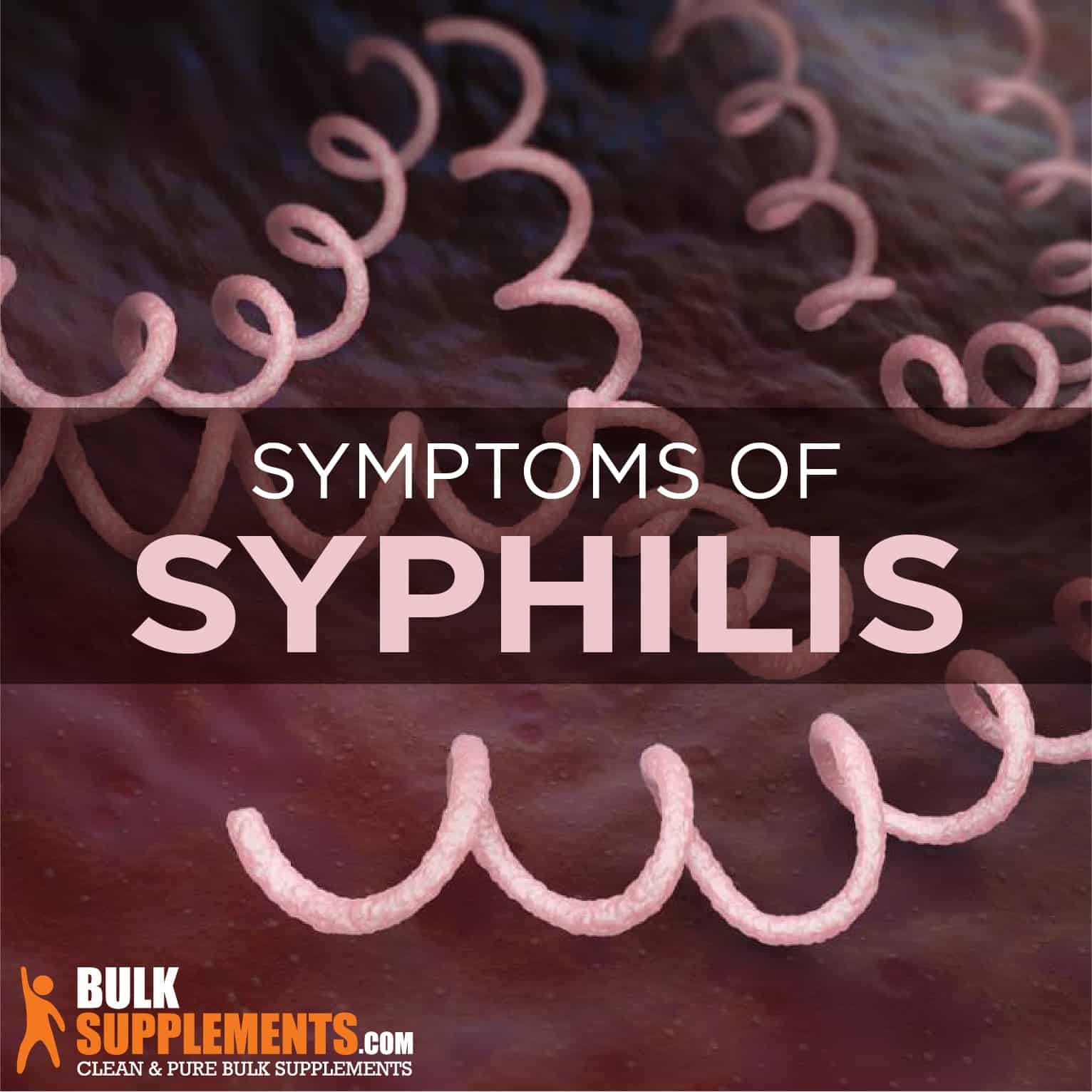What is Syphilis?
Bacterium Treponema pallidum causes syphilis, a sexually transmitted disease (STD). If you have this condition, it can lead to severe and irreversible health conditions if not treated appropriately and timely. Because of its many different clinical indicators, it’s now famous for being “the great imitator and mimicker.” (x)
Therefore, a vast range of symptoms defines syphilis infection and often makes diagnosis difficult when relying solely on the clinical symptoms. Even more so, studies show that it is a significant enabler of HIV transmission because people with the disease avoid safe sex. Hence, HIV is also a sexually transmitted disease, so the chances of catching any sexually transmitted disease are higher than those who practice safe sex.
A heartbreaking aspect of this health concern is that congenital syphilis is a leading cause of childhood morbidity, mortality worldwide and stillbirth. (x) (x)
According to the Centers for Disease Control, 2017 saw a total of 101,567 new reported diagnoses of all stages of syphilis. (x) Out of the reported syphilis cases, 30,644 cases were primary and secondary syphilis, as the earliest and easiest transmissible form of syphilis.
Another worrying statistic about syphilis is that of congenital syphilis. It’s the form of syphilis that can impact a baby through its pregnant mother. The World Health Organization states that 1 million pregnant women had an active syphilis infection in 2016 and stood a high chance of suffering from symptoms during pregnancy, including stillbirth and neonatal birth. (x)
Symptoms of Syphilis
Each condition stage of syphilis directly links to different symptoms. The stages of progression generally relate to the time that has passed since the initial infection. The different stages include: (x)
- Primary Stage Syphilis
Within this stage, the immediate and most tangible sign is the appearance of a single, painless ulcer-like sore called chancre. But there could be several of these sores present. The chancre is sometimes firm, round and pain-free. These symptoms usually appear at the location where syphilis gained entry into the body.
Painless chancres can manifest in places that could make them hard to notice, like around the anus and between folds of skin near the genital region. Chancre usually last for 3-6 weeks, and they heal regardless of whether or not the patient receives treatment. However, if an infected patient does not get the prerequisite treatment, the condition can advance to the second stage. (x)
- Secondary Stage Syphilis
The presence of skin rashes or/and mucous membrane lesions shows the secondary stage of symptoms. This stage develops a rash in more than one area of the body. (x) The rashes linked to this stage of symptoms can appear when the initial chancre is healing or several weeks after the chancre has healed. The rash rarely itches, and the typical rash is often red and rough. It can present as reddish-brown spots on the palms of both hands and at the bottom of the feet. (x)
However, the rashes could also take on a different appearance when situated on other parts of the body. These could sometimes resemble rashes triggered by other ailments.
In some cases, the rashes linked to secondary syphilis could go unnoticed because of how faint they are. Like the primary stage, symptoms of secondary syphilis will go away regardless of treatment. However, without treatment, there is a chance the condition will progress to the latent phase, which is not good. (x)
- Latent Stage
The latent stage of syphilis refers to the time where the signs of syphilis are no longer visible. If a healthcare professional doesn’t administer treatment, you will continue to host syphilis even though the symptoms are no longer visible.
Latent syphilis falls into two categories:
- Early-stage Latent Syphilis
This particular stage refers to latent syphilis, where the infection occurred within the past 12 months.
- Late-stage Latent Syphilis
This particular stage refers to syphilis, where infection happened more than 12 months ago. Some cases of latent syphilis can go on for years, which is harmful to your overall welling-being. (x)
- Tertiary Syphilis
This stage of syphilis is very rare and occurs in a subsection of infections with no treatment. It can happen for as long as 30 years after the initial infection, which could be fatal. It can affect the eyes, blood, nerves, brain, liver, bones, joints and more. The symptoms of this stage of syphilis depend on the infected organ. (x)
- Ocular and Neurosyphilis
Syphilis can infect the nervous system at any of the stages mentioned earlier of infection and unleash a litany of symptoms that include headache, difficulty coordinating muscle movements, change in behavior, paralysis, dementia and sensory deficits. This invasion is neurosyphilis.
Ocular syphilis can also occur at any stage of infection. Unlike neurosyphilis, though, ocular syphilis affects just about any eye structure. Symptoms of this condition include vision changes, permanent blindness and reduced activity in the eyes. (x)

Causes of Syphilis
Syphilis occurs by exposure to the Treponema pallidum bacteria. You can transmit it from person to person once after direct contact with the syphilitic sore referred to as the chancre. The transmission of the ailment occurs during anal, oral or vaginal sex and in addition to this, a pregnant woman with syphilis can transmit to her baby. (x)
The time between the acquisition of syphilis and the emergence of the initial set of symptoms is 21 days, but sometimes it can take 10 to 90 days.
Treatment for Syphilis
Primary, Secondary and Early Latent Syphilis Treatment
According to the Centers for Disease Control, the recommended treatment form for adults and adolescents dealing with primary, secondary or early latent syphilis is Benzathine penicillin G 2.4 million units, administered through the muscle in a single dose.
And for adults and adolescents dealing with late-stage latent syphilis or latent syphilis of unknown duration, the recommended medication is Benzathine penicillin G 7.2 million units, administered in three doses of 2.4 million at one-week intervals. (x)
Neurosyphilis and Ocular Syphilis Treatment
The recommended treatment for neurosyphilis and ocular syphilis is aqueous crystalline penicillin G 18-24 million units per day, administered as 3-4 million units through the vein as a continuous infusion or every 4 hours for 10-14 days. It is important to note that treatment stops the progression rate of the disease and does not reverse existing damage.
Avoid Sexual Activity
It is important to note that when you undergo treatment, stay away from sexual contact until the sores completely heal. You must inform your sexual partners so they, too, can receive the necessary treatment if necessary.
Treatment For Pregnant Women with Syphilis
Pregnant women who have syphilis can receive treatment safely with antibiotics. (x) Treatment means depend on how long syphilis has been in the body and the term of the pregnancy. Women dealing with early latent syphilis receive treatment with penicillin injection if the pregnancy is within the first or second trimester or given two injections a week apart if the pregnancy has reached its third trimester.
Pregnant women who have had syphilis for more than two years receive treatment with three penicillin injections weekly. (x)
Living with Syphilis
Living with syphilis, you can have a high quality of life and take many steps to live with syphilis easier. (x)
Always use a new condom when engaging in vaginal, oral or anal sex. It is also important to remember that these condoms must cover all sores and rashes. That way, you have protection.
Be open and honest when you discuss sexual health with your partner to ensure you both know how to have the best safe sex possible.
Having sex with several partners increases the risk of contracting STDs. It is even more important to use condoms and do regular STD tests if you have multiple partners.
Most importantly, disclose your condition to your sexual partners, who may have the infection even before your diagnosis. It will ensure they seek the appropriate treatment and protect their future sexual partners from contracting the disease.
Remaining with one sexual partner is the best overall solution to avoiding any STD. That way, you live a healthier and more fulfilling life. (x)
Supplements to Help Syphilitic Symptoms
As mentioned before, if you have syphilis, you need to seek treatment immediately and withhold yourself from any sexual activity until all symptoms are gone. Talk to your physician about taking any new supplement and especially while under treatment for any STD. Some supplements include:
- Collagen
This supplement helps to maintain joint health and keep skin elasticity. Collagen powder that comes from pork contains alanine, arginine, glycine and glutamic acid, which are all helpful amino acids. The optimal dosage is 2,500 mg, 2-4 times daily or as directed by your doctor.
If you do not consume pork products, you can also use collagen derived from chicken, fish and bovine sources.
- Ginger
Ginger has its reputation as a natural anti-inflammatory for easing digestive discomfort and related issues. Take 1,000 milligrams (about 1/2 tsp) of ginger once daily or as directed by your medical doctor. To avoid heartburn, take it with at least 8 ounces of water.
- Acai Berry Extract Powder
Acai berry extract powder is chock-full of powerful oxidants that have various benefits to the body. It may contain more antioxidants than blueberries, raspberries and even cranberries. The optimal dosage for this supplement is 1,200 mg. Take it once daily.
- Aloe Vera Extract Powder
As a supplement, take aloe vera extract in doses of 1,000 mg (rounded 1/2 tsp) once daily. Take it with 8 oz of water or as directed by your doctor.
- Probiotics
Penicillin is an antibiotic, which can cause side effects, such as diarrhea, yeast infections and vaginal itching and discharge. The antibiotic kills all bacteria in your body, even the good bacteria — hence the side effects. Taking probiotics helps replace our body with good bacteria to prevent uncomfortable side effects. Thus, it’s possible to help your body heal from syphilis faster. (x)
Where to Buy Supplements for Syphilis?
You can purchase these supplements for syphilis at BulkSupplements.com. The company is an industry-leading manufacturer and distributor of pure dietary supplements.
BulkSupplements.com is not just a consumer brand. It also supplies pure ingredients to other food and supplement brands to make their products. All products at BulkSupplements.com are manufactured and tested according to current and proper manufacturing practices.
Are you interested in trying any of these supplements mentioned in this article as a possible solution to helping you with your treatment for syphilis? Contact BulkSupplements.com to place an order today.
The Bottom Line
Syphilis is a sexually transmitted disease characterized by sores, rash and, if left untreated, can cause damage to your organs, blindness, erratic behavior, dementia and even death.
Treatment is relatively simple, using penicillin. However, because early stages are difficult to detect, they can often go untreated for years. Therefore, regular STD checks are ideal if you or your sexual partner are promiscuous.
If caught promptly and treated, syphilis resolves before it causes lasting and irreversible damage. Pregnant women should also take a test as soon as they realize they are pregnant. The test can prevent their unborn baby from contracting the condition.
Taking supplements to help get your body back to a healthier condition during your treatment is a wise choice.
These statements have not been evaluated by the Food and Drug Administration. These products are not intended to diagnose, treat, cure or prevent any disease.


